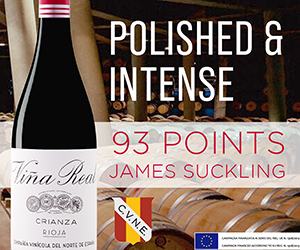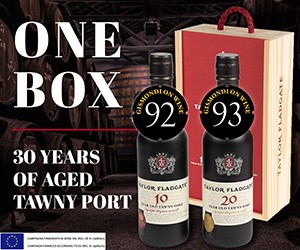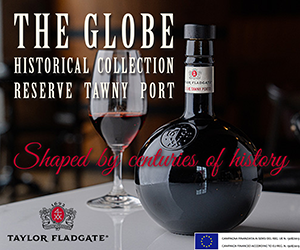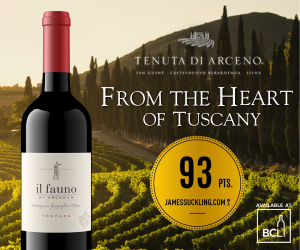Last month I travelled to Los Angeles to attend a tasting of what organizers were calling "the ultra-premium wines of Chile." As pretentious as that sounds, I don't blame the Chileans for searching for some sort of calling card that might improve their lot on the international stage.
Chilean wine is not getting the respect it deserves anywhere in North America, especially from within the wine trade, which sees the products as little more than something to occupy the bottom rungs of their wine lists.
I have my suspicions about why so many in the business are so woefully ignorant of these wines, but most of it comes down to individual education. Chile is too far away for a weekend getaway, and unlike the Australians, the Chileans have been less than diligent in coming to the market to tell their story.
Perhaps more damaging is what has happened - or should I say not happened - in the U.S. market. According to the principals who were in Los Angeles, noted wine guru Robert Parker has yet to set foot in Chile on business, and the highly influential Wine Spectator magazine hasn't paid any attention to the long, thin country in four years.
That doesn't mean respected journals can't review the wine without travelling to its source, but one has to ask why reviews of California or European wine inevitably involve extensive touring, tasting and eating in the region, while Chile's products are relegated to the sterile confines of tasting labs.
As if on cue, Raphael Tirado, winemaker for Casablanca Valley-based Veramonte, one of Chile's newer producers, arrived in Vancouver last week to show off its latest wines and striking new packaging. The eastern edge of the cool Casablanca Valley is less than 90 minutes by car from Santiago, and no more than an hour from the coast. Its proximity to cool Pacific breezes places the almost unheard of appellation among the world's best for growing sauvignon and chardonnay grapes.
Tirado has been at Veramonte since 1997, after working in Spain, the Loire Valley and other parts of Chile. Like the winery's owner, Agustin Huneeus, Tirado believes in "somewhereness," or as he puts it: "tying the grapes and the wine to the soil so that they reflect the full expression of the vineyards."
My notes mirror his thoughts, beginning with two whites that could really make your summer. The reluctance of restaurants to put Chilean whites on their lists does have one good effect: you shouldn't have any trouble finding these two terrific buys in your local wine shop.
The 2001 sauvignon blanc is a delicious mix of refreshing juicy grapefruit, green apples and ripe mango, with a lively mineral streak in the finish. It is simply a super-versatile summer sipper. The 2001 chardonnay boasts a similar fresh-fruit style and easy drinking demeanour. Tirado has continued to reduce the amount of wine that goes through the malolactic fermentation, which reduces the buttery flavours and brings out more fruit. The apple/mineral/nectarine fruit is typically Casablanca, with just a dusting of oak and creamy honey in the finish.
The 2000 merlot was made with fruit from the Maipo Valley, while the winery waits for its Casablanca merlot vines to mature. Strong cassis and herbal aromas mix with peppery, tobacco and minty/menthol flavours. The textures are supple, which make this medium-weight red ready to drink now. The blend is 80-17-3 of merlot, cabernet sauvignon and carménère.
The nose of the 2000 cabernet sauvignon (also Maipo fruit, with 10 per cent merlot added) is even more herbaceous, with hints of barnyard and game. The flavours are similar with bell pepper highlights. The 2000 vintage was less than perfect, and that's been reflected in most of the reds I've tasted. This is a buy-and-drink-now wine.
Primus is Vermonte's ode to carménère, a distinctive grape that originated in France but has found a permanent home in Chile. Once widely planted in Bordeaux, it was all but wiped off the European map by the phylloxera outbreak in the 1880s. Fortunately, sometime prior to that, the vine also known as grande vidure and grande carmenet was carried to Chile.
Unfortunately, it was misidentified as merlot for more than a century. The confusion probably stemmed from its textures (soft) and its somewhat vegetative flavours (if not properly ripened). The '99 Primus is really from the first vintage in which the grapes have achieved full ripeness. This is an almost iconic wine that dares to be different: the colour is black and there's plenty of spicy oak and minty fruit to draw your nose into the glass. Look for rich blackberry fruit and carménère's tell-tale dry crushed- leaf flavours. It has fine weight and finesse.
Weekend Wine Tasting:
Veramonte, Casablanca Valley, Chile
Wine 2001 Sauvignon Blanc
Price $15.95
Stock No. 602649
Score 15/20
Remarks Way cool patio sipper.
Wine 2001 Chardonnay
Price $15.95
Stock No. 494443
Score 15.5/20
Remarks Fresh, stylish and fun to drink.
Wine 2000 Merlot, Maipo Valley
Price $15.95
Stock No. 494435
Score 14/20
Remarks Soft, round, tasty food wine.
Wine 2000 Cabernet Sauvignon, Maipo Valley
Price $15.95
Stock No. 494427
Score 13.5/20
Remarks Light, herbal, ready to drink.
Wine 1999 Primus
Price $27.50
Stock No. 505958
Score 17/20
Remarks Bold, minty black-fruit flavours.
Written By: ag

 quicksearch
quicksearch





